Sound
BTW, here are my RMAA measurements for the MZ2-S.
The microZOTL2.0’s valves startup with the sound of slurping tea in your headphones. His is minimal, as is ON/OFF thump, which muted as it is, sounds like an aborted Miele vacuum cleaner power cycle. The 2,0 outputs 1 watt into headphones. Which translates into a lot of power, particularly for high-ohm headphones. Despite this, it hisses just barely more than Astell&Kern’s first-gen AK100. At the lowest volume, my unit favours the right channel. Balance is achieved after rotating the attenuator by less than five degrees. Even at that setting there is plenty of volume overhead for the most sensitive of earphones. Outside of digital pentameters, this sort of balance is almost unheard of. LinnenberG Maestro’s attenuator is even more accurate, but, physically smaller, fiddlier, and harder to use, while MZ2-S’s is smooth and accurate. It doesn’t glide like a high-end attenuator, but it also doesn’t come at Leica prices. Depending on how you are grounded, it can pick up a lot of electronic noise. Touching it with a grounded body buzzes, sometimes rolls through a 0Hz – 20kHz frequency sweep, and sometimes chimes in a single channel. But this is a valve amp after all. Every in-out valve amp I’ve used exhibits the same grounding problems.
NOTE: Linear Tube Audio suggest that attenuators meant for retail do not hum. The problem was in the faceplate masking, which has now been taken care of.
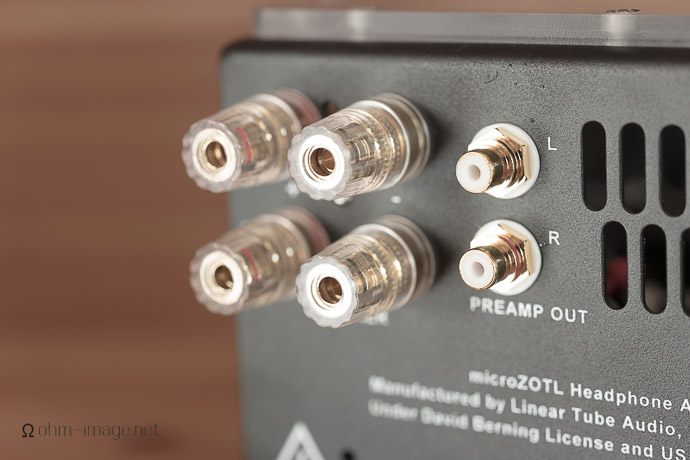
Another anomaly is that its circuitry, despite lacking an internal speaker of any sort, can sometimes duplicate – albeit at extremely low volumes – the signal fed it. The same thing happened with my first Chord Mojo. I have no idea why this occurs.
The MZ2-S has plenty of power for hungry planar magnetic and orthodynamic headphones. Case in point are MyST’s brilliant OrtoPhones, whose sensitivity of 77dB requires a lot of voltage, and whose 18ohms require a lot of current. Both ALO’s Studio Six and Goldmund’s TELOS HDA coax out more clean volume from the OrtoPhones at ear-bleeding levels. The same is true for the 600Ω DT880. But it is my opinion that the microZOLT2,0’s clean, energetic character better matches the OrtoPhones, and its dry, centrally anchored low end better matches the lively DT880’s. And, both amps are far, far more expensive.
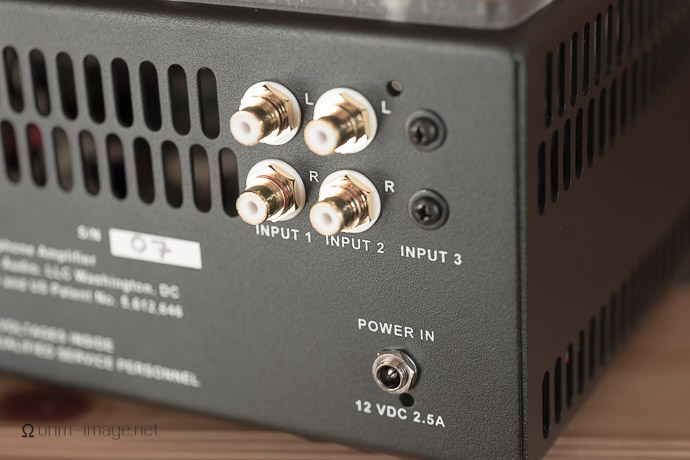
I said energetic above, but I mean now and meant then neutral. That is, with respect to the greater valve market place, the MZ2-S has verve. The microZOTL is as neutrally voiced as valves get. It’s not as sparkly as the Phatlabs Phantasy. It’s not quite as dry as the ALO Studio Six. It sports a virtually even-Stephen frequency response from 20Hz to 20kHz, irrespective the load. Within this framework, its midrange exhibits the least stereo crosstalk, bass the most. Between them, and the only frequency susceptible to load loss, are highs. After about 5kHz (and depending on the load) stereo signals may begin to blur. Crosstalk bottoms out at about -78dB even under load, which is about even with an unloaded iPhone 6. Impressive for a non-hybrid valve amp. Loaded, the microZOTL smears the iPhone 6 all over the pavement.
THD and IMD ramp up only slightly under load. THD starts ~0,250dB and rises to ~0,54dB under the load of the Earsonics SM2, which is slightly cleaner overall than the ALO Continental CDM under load. However, the CDM’s stereo signal is cleaner in the bass region, almost by 10dB. Still, I would hesitate to call it audible. Other tradeoffs are minimal. The MZ2-S ends up sounding slightly softer, but only just so. Essentially it flawlessly combines the stability of a good solid state amp with the soft-handed power of fully valve designs.
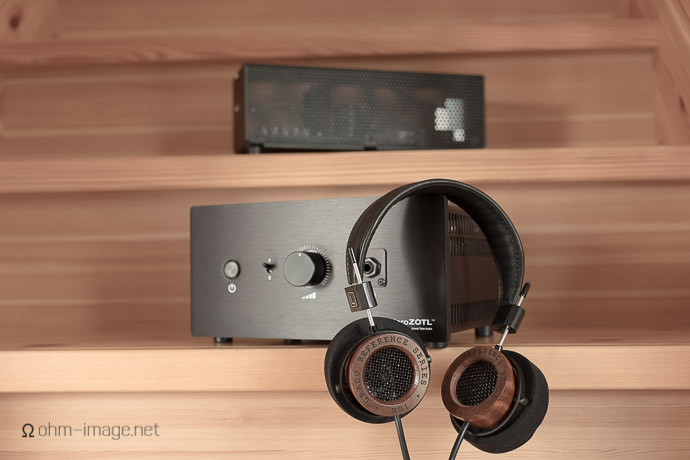
Through it I listen to my MyST OrtoPhones at a volume of 40%, to my DT880/600 at a volume of 35%, and to my Grado RS1 at a volume of about 10%.
Valves are love-it or leave-it. PHAntasy’s bright, clear rings are uniquely addictive. CDM’s stability and minimal warmth are a great compromise between solid state and valve warmth. MicroZOTL sits between the two. It is warmer than the CDM, but only just so. And it is bright and extended into whatever load you feed it. That it is less expensive than either and adds into its feature set a timidly capable power amp into the box, is, at least for the price, ridiculous. It compares favourably, if at sonic odds with the brilliant and emotive LinnenberG Maestro. Expect to see more Linear Tube Audio in our year-end roundup.
Loudspeakers
I own two unpowered speaker sets, but only one worth mentioning. That is the budget-friendly and now-ancient floor-standing Acoustic Energy Aegis Model 2, each side of which weighs about as much as my wife. Iv’e used several low-power amps with Aegis 2, every one of which sounds terribly unimpressive. The Aegis 2 is capable of hard-hitting, bottom-licking lows. And the MZ2-S is the only integrated headphone amp option I’ve used that packs in a power amp that brings that bass out. The difference between it and Centrance DACmini PX is staggering. The PX gets quite louder before sizzling to death with IMD distortion. But, can’t sustain long low-voiced signals into the Aegis Model 2. The result is lifeless, but clear. The MZ2-S, despite putting out 1 Watt, and which is recommended only for small rooms, is capable of distributing my entire bottom floor (I live in a small Japanese house) with mild dance-party level music. And that dance party is a dance party because there is bass. Clear, lively, and fun.
If this is the performance you get from a 1 watt power amp, I can only imagine what you get from Linear Tube Audio’s dedicated ZOTL40 power amp. Bravo
Sound meh
Non-signal noise ramps up when the attenuator is turned to the right.
End words
A bit of attenuator noise and a few labeling mismatches are unable to dislodge the MZ2-S from a small but growing list of valves amps you must listen to. MZ2-S is the stablest amp in that list, and the most full-featured. It sounds great, performs very well, and does so much more than you should reasonably expect.
Well done.
FEATURES
- Designed by David Berning – one of the world’s premier amplifier designers
- Hand-made in Washington, DC
- External power supply – extremely low noise floor
- Drive low efficiency and planar headphones easily
- Drive high efficiency speakers (90dB – 95dB+db efficiency or higher) to adequate volume
- Transparent cover
- Universal voltage power supply (1100$ model; linear power supply can be manually switched between 110-115V and 220-240V)
- 2 selectable inputs (3rd optional at no cost)
- Class A preamplifier output
- Transformer-less design eliminates intermodulation distortion inherent in all transformer designs (1100$version; Linear Power Supply version has transformer in outboard power supply)
- Simulates the correct transformer turns ratio using impedance converter
- Low impedance output easily matches wide range of headphones and speakers
- Same technology & tone as far more expensive amplifiers
- No heavy power or audio transformers
- Patented impedance conversion technology
- Optimized tube life expectancy of 10 – 20 years based on use
- One year warranty including tubes (international pays shipping)
SPECIFICATIONS
Amplifier class: Push-pull Class A, no feedback
Sensitivity: 0.6V RMS [full output]
Output impedance: (measured @ 0.5A, 60 Hz) 2 ohms
Input impedance: 50k
Power Supply Input: Manually switchable 120V(+/- 10%) / 220V(+/- 10%) 50-60hz operation
Power Supply Output: 12VDC 2.5 amps
Hum and noise: minimum 60mV RMS or 90dB below full output (20Hz-20kHz)
Power consumption from ac power source: 33W
Power output: with 4-ohm load: 1W, 1% THD, with 14-ohm load: 0.5W, 1% THD
Channel separation: (4-ohm loads) 46dB, 100Hz-10kHz, (14-ohm loads): 54 dB, 100Hz-10kHz
Frequency response full power: (4-ohm load) +0, -1dB 10Hz-20kHz, (14-ohm load): +0, -1dB 5Hz-50kHz,
Voltage gain: (4-ohm load): 10.3dB, (14-ohm load): 12.4dB
Size: Amplifier: 9 1/2 inches (24.1 cm)wide, 4 3/4 inches (12.0 cm) tall, 7 7/8 inches (19.7 cm) deep (including connectors); External PSU: 12″ (30.48 cm) x 3.25″ (8.26 cm) x 4.25″ (10.8 cm)
Net weight: 8.94 lbs (4.1 kg) – amplifier and external power supply)
Finish: Aluminum case and faceplate w/ lexan top
Tube complement per channel: NOS 6201/12AT7 input, NOS 12SN7 output





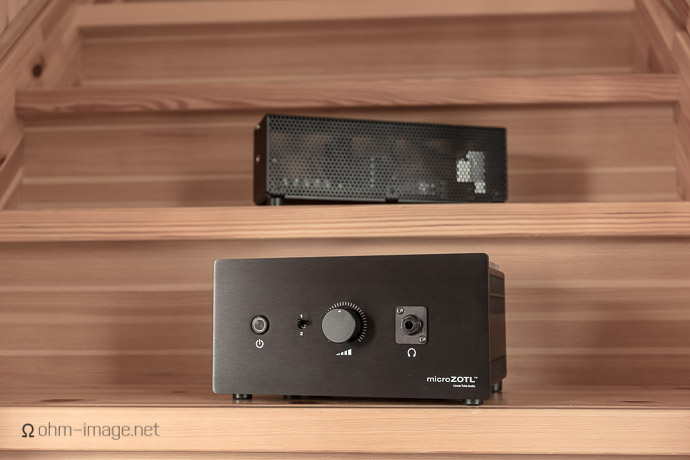
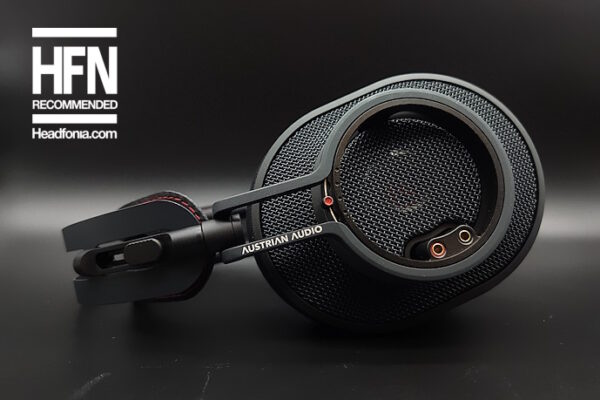

Barun C
Nice article Nathan. This seems competent in terms of driving ability for a tube amp, but I must say, at this price this will have a lot of competition from a lot of Solid State amps, which will come with an option of a DAC. Off the top of my head the Black Widow, CMA 600i, Liquid Carbon.
But the most immediate competitors in the tube segment seem to be the Woo Audio WA 7, WA8 and the EC Zana Deux.
BTW the design aesthetic in terms of the body color, shape and style seems to be very similar to Meier Audio gear.
ohm image
Barun,
This is quite the business: great drive power and current throughput for a huge variety of headphones, and a balanced sound that toes the line of warm but stays close enough to reference (within the constrains of valve technology) that it is bound to make some happy campers.
Peter
Review about Microzotl2.0? Sure? Pictures show MZ2-S and specifications from Microzotl2.0 !
ohm image
The literature I received and the unit itself were labelled as seen originally in the review. However, Linear Tube Audio sent corrections, which I have applied. Thank you.
wasaki
very very confucing review , couldn’t get clear view how is it sound ? I was thinking to order this amp and Dragon Inspire IHA-1